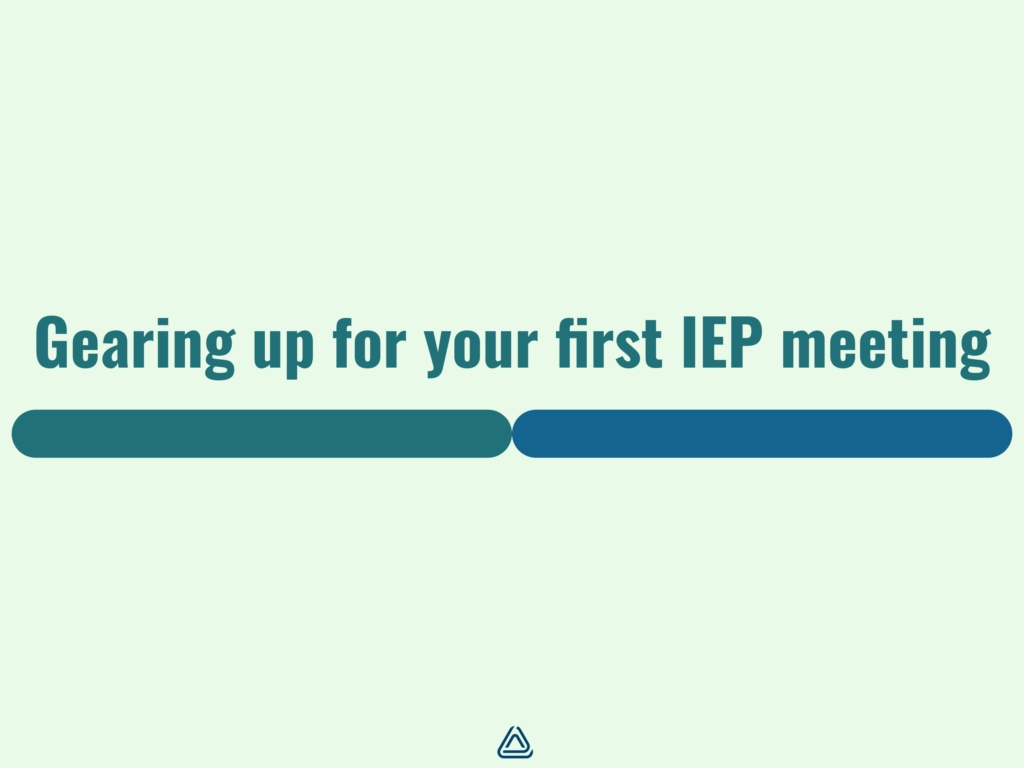
Whether you are coming from a clinical setting and moving into schools or newly graduating and beginning your first job as a school-based therapist, participating in your first Individualized Education Program (IEP) meeting can be both exciting and challenging. Your role in supporting the needs of your students extends beyond individual sessions, and being part of the IEP process is a significant aspect of that support. Today, we’ll explore essential tips and strategies to help you prepare for your first meeting, ensuring advocacy for your student while contributing meaningfully to the collaborative team effort.
Understanding the Importance of IEP Meetings:
The IEP meeting serves as a pivotal moment in a student’s educational journey, bringing together a diverse team of professionals, parents, and sometimes the student themselves to develop a personalized plan for academic, social, and emotional growth. An IEP is a legally binding agreement between the student and the district as protected by the Individuals with Disability Act (IDEA). IDEA ensures that children with disabilities receive a “free and appropriate public education” (FAPE) in the “least restrictive environment” (LRE) and that the education program is designed to meet their needs. As a member of the IEP team, your unique insights into your student’s strengths, challenges, and needs are invaluable in crafting a comprehensive plan that supports their academic journey.
Essential Tips for Preparation:
1. Know Your Student:
Start by gaining a thorough understanding of your student’s strengths, challenges, and goals. Review their educational history, assessments, previous IEP paperwork and progress notes to identify areas of focus and potential areas of need within the educational setting.
2. Familiarize Yourself with the IEP Process:
Take the time to familiarize yourself with the IEP process, including the legal framework, timelines, and components of an IEP. It is essential to understand the importance of the educational relevance around present levels, goals, accommodations, and supporting the least restrictive environment based on individual needs. You can learn more about the importance of IEP Compliance here.
3. Communicate with the IEP Team:
Reach out to other members of the IEP team, such as parents, the student, their teachers, and related service providers. Establish open lines of communication to discuss your student’s progress, goals, and any recommendations for support within the educational setting. Get their input on where the child is succeeding as well as what challenges they are facing in their classes and learning.
4. Define Your Role:
Clarify your role and scope of practice within the IEP process. Be prepared to articulate how your interventions align with the goals and objectives outlined in the IEP, emphasizing the holistic support you provide to address your student’s needs as it relates to accessing the curriculum.
5. Prepare your IEP Documentation:
Gather relevant documentation to support your recommendations and interventions. This may include progress notes, daily treatment notes and data, assessments, and any other documentation that will highlight the progress your student has made yet also establish a continued need for services. Use this information to document within the present levels section of your IEP system and make recommendations for new goals for the student and service time for your student. Know that anything can be changed at any time and will be based on the team’s agreement to the plan. Complete your portion of the IEP at least one week in advance so that the case manager can send a draft to the parents prior to the meeting.
During the Meeting:
1. Advocate Effectively:
As a school-based practitioner, your role in the IEP meeting is to advocate for your student’s educational needs. Collaborate with other team members to develop strategies and interventions that support your student’s overall success within the educational setting.
2. Contribute Meaningfully:
Share your insights, observations, and recommendations based on your work with the student. Highlight their strengths, progress, and areas of need, and contribute to the development of goals and objectives that address their unique academic challenges and aspirations.
3. Collaborate with the Team:
Collaborate with other members of the IEP team to develop a comprehensive plan that addresses all aspects of your student’s educational needs. Be open to feedback, suggestions, and alternative perspectives, and work together to create a plan that prioritizes your student’s success and well-being.
Preparing for your first IEP meeting as a therapist requires careful planning, collaboration, and advocacy. By understanding the importance of the IEP process, familiarizing yourself with your role, and communicating effectively with other team members, you can contribute meaningfully to the development of a comprehensive plan that supports your student’s academic, social, and emotional growth. With your expertise and dedication, you can help ensure that your student receives the holistic support they need to thrive within the educational setting and beyond.


